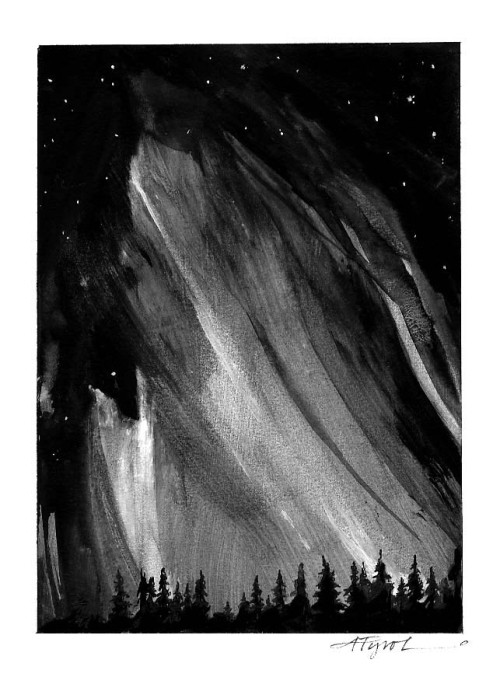
We humans have a knack for believing that everything was better, more vivid, more extreme, or at least more memorable when we were younger. The snow was deeper. The foliage was more beautiful. The summers were cooler. Or warmer. Either way, better.
Usually the facts don’t bear this out. But sometimes they do.
Take the northern lights. I remember standing in downtown Hanover, New Hampshire, after supper in the winter of 1989 and watching bright red northern lights cover more than half the sky – plainly visible through the glare of the streetlights. The following summer, northern lights were so common over Vermont and New Hampshire that, on almost any clear night in July and August, you simply had to walk outside after dark to see a light show straight out of an Arctic photo-shoot in National Geographic.
I confess I started taking the northern lights for granted. But not any more, now that they’re gone.
Well, they aren’t exactly gone, but they are less common than they used to be. The reason has to do with changes in the amount of energy being put out by the sun, or more prosaically, the sunspot cycle.
When dark spots appear on the surface of the sun (seen only through special telescopes, that is – don’t try this at home!), they usually precede an eruption of energy from the sun’s surface called a solar flare. These flares release bursts of energy that travel across the emptiness of space, reaching the earth two to four days later and flooding the top of the atmosphere with charged particles called ions. Sometimes these bursts of ions are so intense that they interfere with telecommunications satellites and radio signals from the ground.
These energy storms also create the northern lights. As the ions enter the earth’s magnetic field, they become concentrated at the north and south magnetic poles, much like iron filings attracted to the poles of a magnet. Over the poles, the ions energize the oxygen and nitrogen atoms that are found at the top of the atmosphere, causing them to glow. If this sounds rather far-fetched, it’s essentially the same way that your television set works: a stream of ions from the back of the set hits the screen, causing the elements behind the screen to glow and emit light. (This is your “old fashioned” TV we’re talking about, not the newfangled flat-screen job you’ve been pondering.)
Greenish-gray is the most common color for the northern lights, but red appears in more intense episodes, along with various shades in between. Over the north magnetic pole, the phenomenon is called the aurora borealis. Over the south, it’s the aurora australis. Because the two poles of a magnet can never be isolated from one another (you can never have a north pole existing all by itself, without a complementary south pole somewhere nearby), whenever the northern lights are taking place, the southern lights are in full swing at exactly the same moment.
Although ions are constantly bathing the earth, the more sunspots occur, the more common it is to see the northern lights because they will be brighter and visible much farther south from the pole. Nearly a thousand years of observations by astronomers has shown that sunspot activity follows an 11-year cycle. At the peak of the cycle, there are 10 times more sunspots occurring than there are at the bottom of the cycle.
You guessed it: 1989/1990 was the peak of a sunspot cycle. Right now, in 2005, we’re at the bottom. There’s still a chance of seeing northern lights these days, but the displays are fewer (meaning you’ll have to stay up a lot of nights hoping to see them) and fainter (meaning you’ll have to stay up very late to catch the sky at its darkest).
The mathematically inclined among you will have noticed that I just skipped from 1990 to 2005, meaning that there must also have been a sunspot peak in 2001, which there was. It just wasn’t as intense as the 1990 peak and didn’t lead to night after night of marvelous light shows over Vermont and New Hampshire.
Astronomers have also noticed that the sunspot peaks themselves follow a cycle, and that the 1990 peak was the third largest in more than 300 years. Though it’s impossible to forecast the sun’s future activity with great precision, astronomers believe that upcoming sunspot peaks will not be as bright as the 1990 peak for a long time to come. So mark your calendar now for the 2012 display. The northern lights may not be as bright as they were back in the last century, but at the very least you’ll have a great opportunity to say, “back when I was a kid….”

